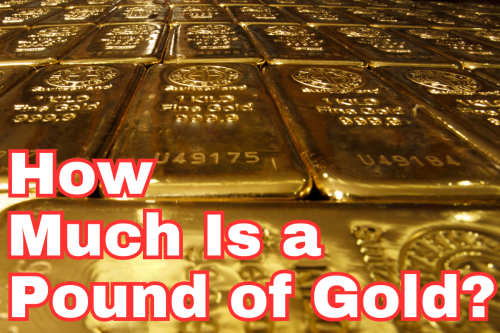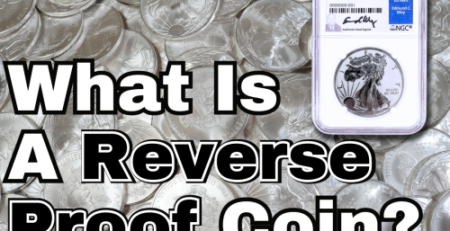

26
How Much Is a Pound of Gold Worth Today? | Gold Bullion Value
Holding a pound of gold feels like touching a piece of the sun’s own treasure; its worth and shine are immense. Our journey begins with the current gold prices and the forces shaping the precious metal market.
Discovering how much a pound of gold fetches opens doors to vast possibilities. Whether you’re stepping into the world of gold investment for the first time or looking to grow your assets, understanding its value is crucial. Gold isn’t just metal; it’s a beacon of stability in an ever-changing financial landscape.
As we peel back the layers on gold’s worth, you’ll see why it remains a sought-after asset for investors. Let’s unlock the mysteries of gold’s value together, making it simpler for you to navigate your investment path. Welcome to your guide on the value of a pound of gold, where financial security meets tangible wealth.
Understanding Gold Prices
Gold prices are like the heartbeat of the financial world, pulsing up and down with global events, market dynamics, and investor sentiment. These fluctuations are more than just numbers; they tell stories of economic stability, geopolitical tensions, and shifts in demand.
But what makes gold prices tick? Several key factors play a role, including:
- Inflation rates
- Currency values
- Interest rates
- Political stability across the globe
For investors, keeping an eye on these indicators is crucial for timing their gold investments wisely.
When it comes to investing in gold, understanding its price movements is akin to reading a map in a treasure hunt. The price of gold is often seen as a reflection of the world’s economic health; when uncertainty rises, so does the appeal of gold as a safe haven. This intrinsic value of gold, coupled with its finite supply, ensures its place as a perennial favorite among investors.
The Heft of a Pound: Gold Cost Per Pound
Gold’s price per pound captures attention not just for its sheer value but for what it signifies about the market’s health and investor confidence. Remember, the world measures gold in troy ounces, with one pound equaling approximately 14.583 troy ounces. This conversion is key to understanding gold’s true market price.
Gold’s cost per pound fluctuates based on a variety of factors, from global economic trends to supply and demand dynamics. These shifts in value are crucial for investors and collectors alike, offering insights into when might be the best time to buy or sell. Let’s now look at some historical price shifts and why they happened.
1. The 1970s Inflation Surge
The 1970s were a defining decade for gold, marked by an extraordinary escalation in its price. It was a phenomenon largely attributed to rampant inflation, exacerbated by successive oil crises and mounting geopolitical tensions.
At the dawn of the decade, gold was pegged at approximately $35 per ounce, a valuation rooted in the Bretton Woods system, which linked global currencies to the precious metal. However, this fixed rate was soon to be tested by a series of economic challenges.
The decade commenced with the U.S. dollar decoupling from gold in 1971, an event that sent shockwaves through international markets. This move to a fiat currency system allowed gold prices to float freely, setting the stage for the dramatic increases that would follow.
The subsequent oil crises of 1973 and 1979 placed intense pressure on global economies, further fueling inflationary spirals. These crises not only disrupted energy markets but also eroded confidence in traditional investments, leading investors to seek refuge in gold.
Double-Digit Rates
As inflation soared, reaching double-digit rates in many countries, the value of paper money diminished. Gold, in contrast, maintained its purchasing power, attracting a surge in investment.
This shift was not merely a reaction to inflation. But it was also a reaction to the Cold War era’s geopolitical instability, which heightened the demand for a universally recognized safe asset.
By the end of 1979, gold’s price had soared to over $800 per ounce, illustrating a response to immediate economic conditions and a fundamental change in how gold was perceived in the financial world. This period underscored gold’s unique position as a hedge against inflation and a safe haven during times of economic uncertainty and geopolitical strife.
Investors globally recognized gold as a key asset for preserving wealth. So there was a significant shift in investment strategies that would influence market dynamics for decades to come.
2. Early 2000s Increase
The dawn of the new millennium marked the beginning of a remarkable ascent in gold prices, a trend fueled by a confluence of economic uncertainties and geopolitical shocks. In 2000, gold was modestly priced at around $250 per ounce.
This period was characterized by the bursting of the dot-com bubble, an event that eroded substantial market value and investor confidence in technology stocks, heralding a shift towards safer, more tangible assets like gold.
The tragic events of September 11, 2001, further compounded global uncertainties, triggering widespread geopolitical unrest and leading to the Afghanistan and Iraq wars. These conflicts destabilize regions but also heighten concerns over global security and economic stability, prompting investors to increasingly turn to gold as a refuge against uncertainty.
The early 2000s also witnessed significant economic policy shifts, notably in the United States, where the Federal Reserve’s response to the dot-com crash and subsequent economic downturn involved lowering interest rates. This monetary policy, aimed at stimulating the economy, further diminished the yield on traditional investments such as bonds. It made gold, an asset that does not offer interest but is valued for its security, more attractive.
3. 2008 Financial Crisis
The financial crisis of 2008 stands as a watershed moment for gold, showcasing its enduring value in times of economic despair. Before the crisis, gold prices were already on an upward trajectory, but the collapse of Lehman Brothers and the ensuing global financial meltdown catalyzed a dramatic spike in demand for the precious metal. As stock markets plummeted and banking institutions teetered on the brink of failure, investors globally sought the safety of gold, propelling its price to new heights.
The crisis highlighted the inherent risks in the financial system, from over-leveraged banks to the murky world of derivative investments, shaking investor confidence in traditional assets. In this climate of fear and uncertainty, gold’s intrinsic value as a tangible asset free from counterparty risk became immensely appealing.
Governments and central banks around the world responded to the crisis with aggressive monetary easing policies. They slashed interest rates to near-zero levels and launched quantitative easing programs to inject liquidity into the economies.
These measures, while stabilizing the financial system, also led to concerns about long-term inflation and the devaluation of currencies, further bolstering gold’s appeal as a hedge against these risks. As a result, gold prices surged in the aftermath of the crisis, with investors and central banks alike increasing their gold holdings as a safeguard against future economic shocks.
By 2011, in the thick of the European sovereign debt crisis and continued economic uncertainty, gold reached its then-record price of over $1,900 per ounce. This period not only underscored gold’s role as a “crisis commodity” but also reaffirmed its significance in a diversified investment portfolio, capable of protecting against both inflation and deflation, currency devaluation, and economic instability. The 2008 financial crisis and its aftermath firmly established gold’s reputation as a safe haven asset, a perception that continues to drive its value in times of uncertainty.
Recent Years’ Record Highs
The trajectory of gold prices has reached new zeniths in recent years, especially in 2020, when the world grappled with the unprecedented challenges posed by the COVID-19 pandemic. This period saw gold surpassing the $2,000 per ounce milestone, a testament to its enduring appeal during times of global uncertainty.
The pandemic-induced economic slowdown prompted central banks and governments worldwide to implement massive fiscal stimulus measures and monetary easing policies. These included lowering interest rates to historic lows and injecting trillions into the global economy to sustain businesses and employment.
Such actions, while necessary to mitigate the economic fallout, stoked fears of inflation and currency devaluation. This drove investors towards gold as a reliable store of value.
Geopolitical Tensions
The pandemic was not the sole driver of gold’s price surge. The years leading up to 2020 were already marked by increasing geopolitical tensions, trade disputes between major economies such as the United States and China, and growing concerns about the sustainability of global economic expansion. These factors collectively contributed to a climate of uncertainty and volatility, conditions under which gold traditionally thrives.
Technological advancements and a green energy transition also played a role in bolstering gold demand. Gold’s applications in electronics, healthcare, and as a component in renewable energy technologies, have expanded its market beyond traditional investment and jewelry demand, providing a new avenue for growth.
Additionally, the social and political unrest in various parts of the world, along with concerns about the possible long-term impacts of climate change, have led investors to seek assets that offer not just financial returns but also stability and security against a backdrop of global instability. Gold’s performance during this period underscored its dual role as both a hedge against inflation and a go-to asset, capable of preserving wealth through turbulent times.
By reflecting on gold’s significant rise in recent years, it becomes evident that its value is not merely based on current economic conditions but is also deeply intertwined with broader societal and global trends. This period of record highs is a powerful reminder of gold’s unique status within the investment landscape. It offers both security and potential growth amid the complexities of the modern world.
Navigating the Precious Metal Market
Navigating the precious metal market requires a blend of keen insight, timely information, and an understanding of the broader economic indicators that influence market movements. Gold, along with silver, platinum, and palladium, forms the core of this vibrant market.
Each metal serves different roles within the investment landscape and responds uniquely to market dynamics. Let’s look into navigating within the precious metal market.
Staying Informed
The first step in successfully navigating this market is staying informed about global economic conditions. This includes keeping up to date with:
- Interest rate movements
- Inflation rates
- Geopolitical events
These factors can significantly impact precious metal prices. Subscribing to financial news, following market analysts, and participating in investment forums can provide valuable insights and forecasts, helping investors make informed decisions.
Understanding Market Cycles
Precious metals, particularly gold, have historically performed well during periods of economic uncertainty or inflation, acting as a hedge against currency devaluation. Recognizing the cyclical nature of the market and identifying these periods can be crucial for timing investments effectively.
Historical data analysis can offer insights into how precious metals have responded to past economic cycles. They can essentially guide your current investment strategies.
Diversification
Diversification is a fundamental principle in investing, and the precious metal market offers various options for spreading risk. Investors can choose between physical metals, such as coins and bars, or financial instruments like ETFs, futures, and mining company stocks.
Each option comes with its own set of considerations regarding liquidity, storage, and exposure to market volatility.
Consulting Experts
For those new to the market or looking to deepen their investment strategy, consulting with financial advisors who specialize in precious metals can be invaluable.
These experts can provide tailored advice based on individual financial goals and risk tolerance. They can help you to navigate the complexities of the precious metal market with greater confidence.

A Pound of Gold: The Measure of True Value
In the end, a pound of gold is more than just a hefty chunk of precious metal; it’s a testament to enduring value and stability in a fluctuating world. By understanding its worth and the factors that influence it, you’re better positioned to make smart investment choices that can secure your financial legacy.
Ready to explore the golden opportunities awaiting you? At US Gold Bureau, we’re dedicated to helping you navigate the precious metals market with confidence.
Whether you’re planning for retirement, seeking advice on wealth management, or aiming to create generational wealth, gold can play a pivotal role in achieving your financial goals. Get our free precious metals investor guide today and take the first step towards securing your golden future.



